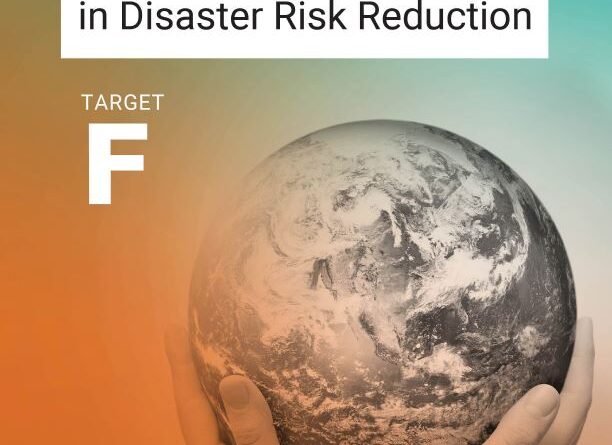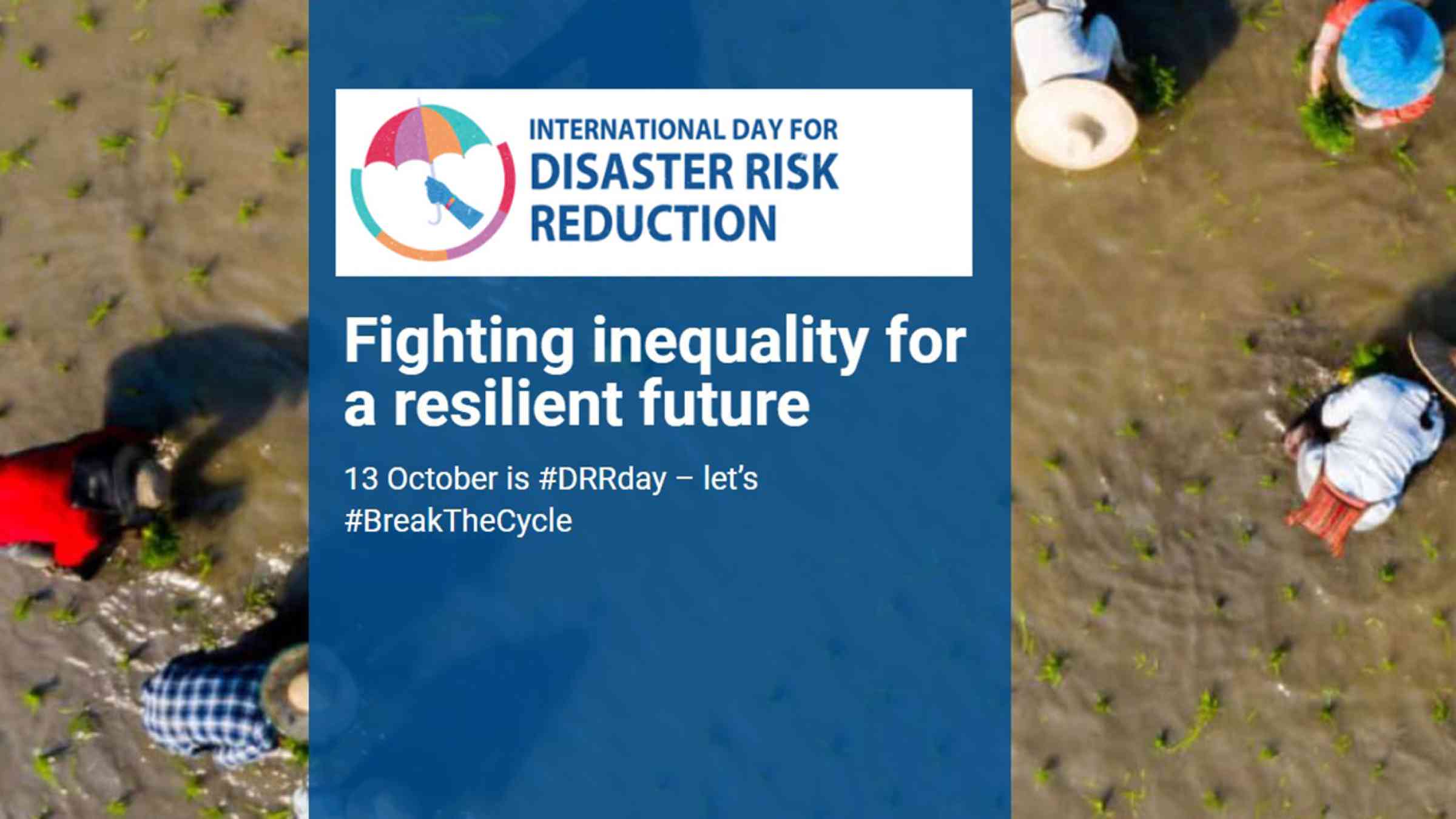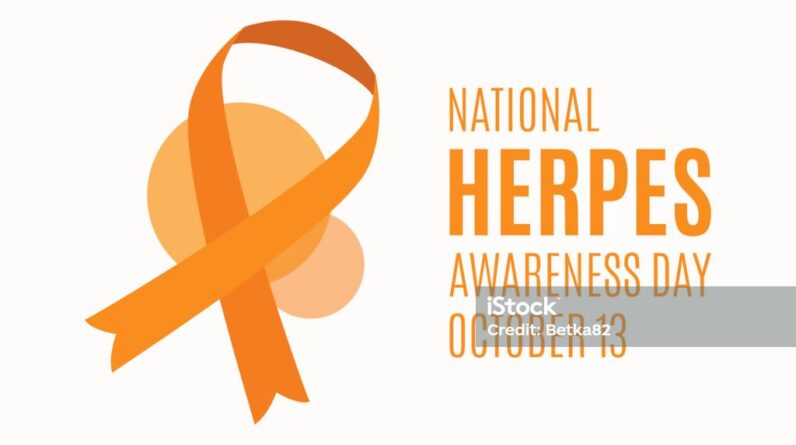
The International Day for Disaster Risk Reduction raises awareness and promotes actions to reduce disaster risks. This day encourages individuals, communities, and governments to take proactive measures in order to minimize the impact of disasters.
Disasters, whether natural or man-made, can have devastating consequences on communities, economies, and the environment. They can cause loss of life, displacement of people, destruction of infrastructure, and disruption of essential services. The International Day for Disaster Risk Reduction aims to address these challenges by promoting resilience and the importance of disaster risk reduction.
By focusing on prevention, preparedness, and early warning systems, this day emphasizes the need for proactive measures to mitigate the impact of disasters. It provides an opportunity for governments, organizations, and individuals to share experiences, best practices, and knowledge in order to build more resilient communities and nations. The International Day for Disaster Risk Reduction serves as a reminder that by investing in disaster risk reduction, we can save lives, protect livelihoods, and safeguard our environment.

Credit: www.undrr.org
The Importance Of Disaster Risk Reduction
Disasters have a profound impact on communities across the globe. From natural hazards, such as earthquakes and hurricanes, to human-caused incidents, like industrial accidents or terrorist attacks, the consequences can be devastating. It is essential to adopt proactive measures to reduce the risk of disasters and protect lives. Disaster risk reduction (DRR) aims to minimize vulnerabilities and enhance resilience through a combination of prevention, preparedness, and response efforts.
DRR plays a pivotal role in saving lives and safeguarding communities. The impact of disasters can be mitigated by implementing early warning systems, promoting effective evacuation plans, and investing in infrastructure resilience. Additionally, DRR focuses on enhancing public awareness and understanding of potential risks, emphasizing the importance of community engagement and participation.
Ultimately, disaster risk reduction is crucial in building a sustainable future. By prioritizing DRR, societies can better cope with the complex challenges of disasters, creating safer and more resilient communities.
Understanding Disaster Risk Reduction
Disaster Risk Reduction (DRR) is the cornerstone for building resilient communities and safeguarding sustainable development. It encompasses a holistic approach that helps identify, assess, and reduce the vulnerabilities of individuals, communities, and nations to disasters. The main objective of DRR is to minimize the impacts of hazards and improve people’s ability to cope with them.
DRR is guided by several key principles, including:
- Building on a foundation of good governance, sustainable development, and respect for human rights.
- Recognizing the importance of local knowledge and participation.
- Promoting an inclusive and gender-responsive approach.
- Fostering collaboration and partnerships among governments, organizations, and communities.
Implementing effective DRR strategies requires the active involvement of various stakeholders, including governments, non-governmental organizations, communities, and individuals. Each stakeholder is crucial in coordinating efforts, sharing resources, and advocating for policies that address disaster risks. By working together, these stakeholders can ensure a comprehensive and integrated approach towards reducing disaster risks and creating a safer and more resilient world.
International Efforts For Disaster Risk Reduction
The International Day for Disaster Risk Reduction is an annual worldwide event on October 13th. It aims to raise awareness about disaster risk reduction and encourage individuals, communities, and governments to take action to prevent and mitigate the impact of disasters. This day serves as a platform for international efforts towards disaster risk reduction.
Overview of the International Day for Disaster Risk Reduction
The International Day for Disaster Risk Reduction provides an opportunity to highlight key initiatives and campaigns that focus on reducing disaster risks globally. Governments, organizations, and communities unite to share knowledge, experiences, and best practices in disaster resilience.
It also encourages collaboration among global organizations in establishing effective strategies and frameworks for disaster risk reduction. This collaboration promotes exchanging information, resources, and expertise to enhance disaster preparedness, response, and recovery efforts.
Enhancing Disaster Preparedness And Response
To effectively enhance disaster preparedness and response, it is crucial to focus on developing early warning systems, employing effective evacuation strategies, and building resilient infrastructure and communities.
| Developing early warning systems | Early warning systems are critical in disaster risk reduction by providing timely alerts and information to at-risk communities. These systems utilize various technologies and methods, such as seismic sensors and climate monitoring, to detect potential hazards and communicate warnings to the public. |
| Effective evacuation strategies | Ensuring the safety of individuals during a disaster requires implementing effective evacuation strategies. This includes establishing clear evacuation routes, organizing evacuation drills, and providing necessary resources and support to those in need. |
| Building resilient infrastructure and communities | Resilient infrastructure and communities can withstand and recover from disasters more effectively. This involves constructing buildings and infrastructure that adhere to strict building codes and disaster-resistant designs and promoting community engagement and education in disaster preparedness and mitigation. |
Education And Awareness For Disaster Risk Reduction
International Day for Disaster Risk Reduction is an important global observance that aims to enhance education and awareness regarding the measures to reduce disaster risks. Education is crucial in disaster risk reduction as it equips people with knowledge and skills to prepare for and respond to potential disasters.
By incorporating disaster risk reduction into school curricula, students can learn about the various hazards, the importance of early warning systems, and appropriate response strategies. Promoting awareness through campaigns and events further helps disseminate information to a wider audience.
When individuals are well-informed about the risks associated with disasters, they are more likely to take necessary steps to protect themselves and their communities. Integrating practical exercises and simulations in educational programs can also enhance preparedness. By prioritizing education and raising awareness, we can collectively work towards building more resilient communities.
Addressing Vulnerabilities And Climate Change
The International Day for Disaster Risk Reduction is an important event that aims to raise awareness and promote action to address vulnerabilities and climate change. Identifying vulnerable populations is essential to develop effective strategies for reducing vulnerability. Vulnerable groups such as children, the elderly, and people with disabilities require special attention and support.
To reduce vulnerability, it is crucial to implement strategies that focus on disaster preparedness, response, and recovery. This includes improving early warning systems, strengthening infrastructure, and developing contingency plans. Communities must also be empowered through education and training to better understand and mitigate risks.
Adapting to climate change impacts is another key aspect of disaster risk reduction. This involves implementing measures to increase resilience and reduce the potential for damage and loss. Actions can include modifying land-use practices, implementing sustainable development strategies, and promoting the use of renewable energy sources.
We can work towards a more sustainable and resilient future by addressing vulnerabilities and adapting to climate change impacts. The International Day for Disaster Risk Reduction serves as a reminder of the importance of taking action to protect communities and build resilience.
Incorporating Technology In Disaster Risk Reduction
The International Day for Disaster Risk Reduction is an important event highlighting the need to incorporate technology in disaster risk reduction efforts. Innovations in early warning systems have played a crucial role in improving disaster planning and response.
One such innovation is using Geographic Information Systems (GIS), which provide valuable spatial data for identifying high-risk areas and optimizing resource allocation. Using GIS technology, emergency responders can efficiently plan evacuation routes, identify safe zones, and ensure effective deployment of resources.
Integrating social media and mobile applications is another technological advancement that has revolutionized disaster risk reduction. These platforms enable real-time communication and engagement with affected communities, allowing for rapid dissemination of emergency information, reporting of incidents, and coordination of relief efforts. By harnessing the power of social media and mobile applications, authorities can foster a greater sense of community resilience and empower individuals to actively participate in disaster management.
Embracing innovative technologies in disaster risk reduction is essential for building robust and effective systems that can mitigate the impact of disasters. The International Day for Disaster Risk Reduction serves as a reminder of the importance of incorporating technology in all facets of disaster planning and response.
Sustainable Development Goals And Disaster Risk Reduction
The International Day for Disaster Risk Reduction aims to raise awareness and promote efforts to reduce the vulnerability of communities to disasters. It emphasizes the importance of integrating disaster risk reduction into sustainable development goals.
Disaster risk reduction and sustainable development goals are closely linked. By incorporating disaster risk reduction strategies into development projects, we can enhance the resilience of communities and contribute to achieving sustainable development goals.
The role of disaster risk reduction in achieving a sustainable future cannot be understated. Identifying and addressing the underlying causes of vulnerability can build a more resilient society and protect lives, livelihoods, and ecosystems.
| Case studies of successful integration | Key takeaways |
| 1. Bangladesh: Disaster risk reduction measures integrated into infrastructure development projects, resulting in reduced vulnerability and increased resilience. | • Integration of disaster risk reduction into development projects is vital for sustainable outcomes. |
| 2. Japan: The concept of resilience is embedded in urban planning and design after experiencing devastating earthquakes, leading to safer and more resilient cities. | • Building resilience requires long-term planning and implementation. |
| 3. Maldives: Integration of disaster risk reduction into tourism development projects to protect coastal ecosystems and enhance the resilience of communities. | • Sustainable development should prioritize environmental protection and community well-being. |
These case studies showcase the successful integration of disaster risk reduction into development projects and highlight the importance of incorporating these strategies into various sectors. By prioritizing disaster risk reduction, we can create a sustainable future that is resilient to the challenges posed by natural and man-made hazards.
Empowering Communities For Resilience
The International Day for Disaster Risk Reduction aims to raise awareness about the importance of empowering communities for resilience. Community-based disaster risk management plays a crucial role in building resilience at the local level.
By involving local communities in risk reduction efforts, we can create sustainable solutions to mitigate the impact of disasters. Capacity building and training programs are essential for equipping communities with the knowledge and skills to effectively respond to and recover from disasters.
Empowering marginalized communities is particularly crucial as they often face additional challenges and vulnerabilities. By engaging and empowering these communities, we can ensure that no one is left behind in disaster risk reduction efforts. We can work towards a more resilient and disaster-resistant future for all.
Future Challenges And Opportunities
Disaster risk reduction is crucial in preparing for future challenges and opportunities. Anticipating future risks and hazards is essential to enhance our resilience. Technology-driven solutions are critical in disaster management, enabling real-time monitoring, early warning systems, and effective response strategies.
These solutions include geospatial mapping, machine learning algorithms, and remote sensing technologies to identify vulnerable areas and assess the impact of potential disasters. Utilizing these innovations can better understand the nature of various hazards and enhance our preparedness.
Another significant aspect of disaster risk reduction lies in strengthening international cooperation. Collaborative efforts can facilitate knowledge sharing, resource allocation, and capacity building across countries.
This entails data exchange, collaborative research initiatives, and joint response exercises to foster a collective response to disasters. International cooperation can enhance our ability to mitigate risks and build more resilient communities worldwide.
In conclusion, embracing technology-driven solutions and fostering international cooperation are essential in addressing future challenges and maximizing opportunities for disaster risk reduction.
Frequently Asked Questions On International Day For Disaster Risk Reduction
Why Is International Day For Disaster Risk Reduction Celebrated?
International Day for Disaster Risk Reduction is celebrated to raise awareness about the importance of reducing disaster risks. It encourages individuals, organizations, and governments to proactively prevent and manage disasters, protecting lives and minimizing their impact.
What Is The Theme Of The International Day For Disaster Risk Reduction?
The theme of the International Day for Disaster Risk Reduction changes every year to promote awareness and action towards reducing the risks associated with disasters.
What Is The Theme Of The Disaster Risk Reduction Day 2023?
The theme of the Disaster Risk Reduction Day 2023 is focused on building resilient communities.
What Is International Day For Disaster Risk Reduction?
International Day for Disaster Risk Reduction is a global observance held on October 13th each year to raise awareness about disaster risk reduction and promote efforts to build resilient communities.
Conclusion
Recognizing the significance of International Day for Disaster Risk Reduction is crucial as we strive to build resilient communities. By focusing on proactive measures and raising awareness, we can better equip ourselves to mitigate the impacts of natural disasters.
Together, we must prioritize disaster risk reduction and work towards building a safer and more sustainable future for all. Stay informed, take action, and make a difference in creating a better prepared world for any calamity.





